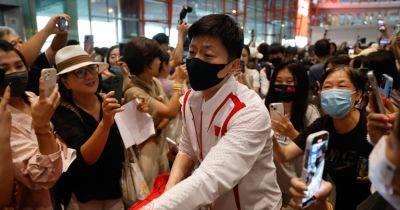Olympic Surfing Comes to a ‘Poisoned’ Paradise
Fifty years ago this July, as the waters of the South Pacific rushed toward the shores of Teahupo’o in a perfect, powerful curl, as they have always done, another wave visited the tiny hamlet. This time it was an invisible and airborne one: a surge of radiation escaping from a nuclear weapon test conducted by France in this far-flung reach of their republic.
Roniu Tupana Poareu was born in Teahupo’o, her family home fringed by palm trees and hibiscus bushes. She now serves as its mayor and speaks proudly of how its azure wave — a platonic ideal of coiled, frothy propulsion — was selected as the site of the surfing competition in these Summer Olympics, being hosted half a world away in Paris.
But Teahupo’o concealed a secret behind its sunny tourist brochure seascape. Unbeknown to its residents, Teahupo’o recorded, according to declassified French military documents, some of the highest radiation readings on Tahiti, French Polynesia’s most populated island, after a radioactive cloud unexpectedly drifted overhead in July 1974.







